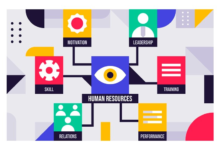
Major Cybersecurity Threats Every Healthcare Organization Should Be Aware About
The entire healthcare industry has been at the forefront of being the prime target for cybercriminals from all around the world. They get access to the high-valued patient data while using it viciously to disrupt the treatment routine of the patient, bringing down the essential uptime. Repercussions follow, impacting patients, doctors, hospitals, and everything that comes under the space of the healthcare system.
In such a case, staying aware of the major cyber threats, especially when dealing with third parties, is essential, along with taking proper measures like healthcare vendor risk management. Our post will highlight the serious threats that challenge the entire face of the healthcare industry.
Table of Contents
Top Cybersecurity Threats in the Healthcare Industry
Let us now check out the major cybersecurity threats that healthcare providers should know about, ensuring that they are able to retain their valuable health data and prevent any security breaches.
Data Breaches
Reportedly, between March 2022 and 2023, the average cost of a data breach in the healthcare industry was about $11 million. Therefore, it is worth noting that data breaches are considered one of the major cybersecurity threats across the entire healthcare vertical. The major emphasis should stay on adequate device monitoring and risk management for healthcare industry.
Additionally, healthcare software companies and providers should follow the protocols of the Health Insurance Portability and Accountability Act, or HIPAA. This can assist them in safeguarding their key details. However, it is only followed by a few in the industry, offering attackers chances to breach data.
Ransomware and Malware
Ransomware is a subset of malware that attackers use to derive data on a victim’s computer with encryption and demand payment for the return of access. It is the most dangerous cyberattack that healthcare professionals encounter. These attacks are caused by cybercriminals with the help of trojan viruses that impact the computers or phishing mail when a user clicks on any link or downloads any specific attachment.
Vulnerability of Legacy Systems
The main urgency calls for the replacement of the legacy systems with a modernized ecosystem. However, several healthcare organizations are double-minded regarding making any changes, and they wish to refrain from implementing any sort of transition. Additionally, it creates the scope for a major cyberattack since the traditional system does not bear any level of protection for modern-day viruses and malware. Stringent budgets, compliance guarantees, complacency, and upskilling costs are reasons why these organizations wish to refrain from upgrading their IT infrastructure. Therefore, it gives the cyberattacks a back-door entry to exploit the systems regularly.
Insider Threats
Not every cybersecurity attack is made from external sources, and even insiders contribute heavily to these attacks. For instance, there are various scenarios where employees are unhappy, and they decide to steal key information or disrupt the network to impact availability. These forms of attacks are termed insider threats, and they have notably increased in the past couple of years. Several organizations consider that privileged users perform insider threats. Therefore, it is compulsory to keep a constant watch on them.
Insecure Medical Devices and Equipment
The modern-day healthcare industry is a voluminous basket storing critical healthcare data. Healthcare professionals use connected medical devices to treat patients. The frequent use of medical equipment and devices makes secured access needed for the hour. Sadly, the majority of hospitals do not prioritize this aspect, and this leads to cyberattacks. It renders the path for the attackers to get access to the insecure devices and take them under complete control.
Distributed Denial of Service (DDoS) attack
DDoS or Distributed Denial of Service attacks try to flood the network or the website with online traffic to disrupt availability and performance. Cybercriminals use bots to send an unmanageable series of requests onto the server to disrupt it. Several attackers use DDoS attacks along with Ransomware since it is one of the most destructive combos involved in cyberattacks. Additionally, the attackers can bring down the healthcare websites over a greater time, leading to serious panic attacks since the healthcare providers can hardly remain unavailable for a long time.
Lack of Documented Cybersecurity and Governance Policies
Each healthcare company should document its rules for cybersecurity and build governing mechanisms. Additionally, each healthcare provider should maintain the last six years of documentation related to the required actions, security policies, finished activities, and security testing evaluations. Sadly, healthcare companies will not spend time setting up processes or building robust documentation. They consider it time-consuming and reduces productivity. But it lays a robust foundation for the ecosystems instead.
Conclusion
Cybersecurity is the main cause behind the restless nights of site administrators. In the healthcare industry, the problem is much more intensified due to the critical information and sensitive data associated with it. None of the healthcare organizations can say they have complete control of their digital assets. The key reason behind it is the ever-evolving cybersecurity attacks happening each year and you should stay aware of the threats to remain relevant in the industry.








